In this article, we’ll show how to load JSON data into Snowflake from Amazon S3.
(This article is part of our Snowflake Guide. Use the right-hand menu to navigate.)
Snowflake and JSON files
Snowflake is a data warehouse on AWS. The Snowflake COPY command lets you copy JSON, XML, CSV, Avro, Parquet, and XML format data files.
But to say that Snowflake supports JSON files is a little misleading—it does not parse these data files, as we showed in an example with Amazon Redshift. Instead, Snowflake copies the entirety of the data into one Snowflake column of type variant. Then you run JSON SQL queries against that.
We will load two data files, which you can download from here:
Note: This is in NDJSON format. That means the entire file is not a valid JSON file. Instead it is composed of individual JSON records.
Create database and warehouse
We are running our Snowflake cluster on Amazon AWS. (It is not listed as a service on the Amazon AWS Console. Instead you sign up for it on the Snowflake site, then it launches an instance on Amazon, Microsoft, or Google clouds.)
You create a warehouse like this. Here is where you pick the machine site and number of servers, thus picking the computing power and cost.
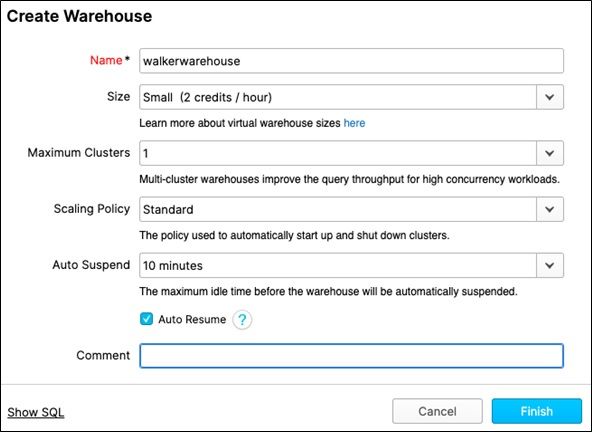
Create external stage
You can copy data directly from Amazon S3, but Snowflake recommends that you use their external stage area. They give no reason for this. But, doing so means you can store your credentials and thus simplify the copy syntax plus use wildcard patterns to select files when you copy them.
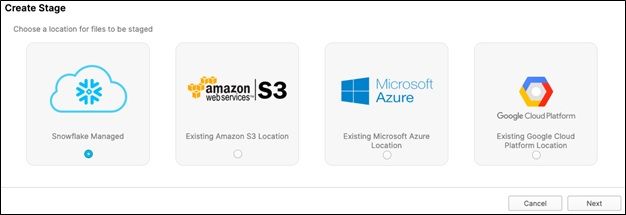
You give it a name and point it to an S3 bucket.
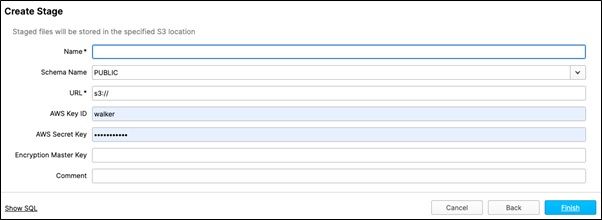
Create a database
As with other databases, a database is a collection of tables. So, it’s just a name in this simple example. Create it from the Snowflake console like this:
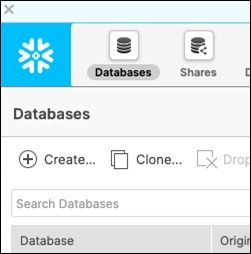
Create tables
Next, open the worksheet editor and paste in this SQL to create the customers and orders tables. Note that both have one column of type variant.
use database inventory; create table customers (customer variant); create table orders(orders variant);
Upload JSON data to S3
Copy the data to S3 using the Amazon S3 console or AWS CLI command line:
aws s3 cp customers.json s3:/(bucket name) aws s3 cp orders.json s3://(bucket name)
Bulk load the JSON data into Snowflake
Copy the customers and orders data into Snowflake like this. Since that S3 bucket contains both files we give the name using PATTERN. That can be any regular expression.
copy into customers from @GLUEBMCWALKERROWE FILE_FORMAT=(TYPE= 'JSON') PATTERN= 'customers.json';
One annoying feature is that you have to select the All Queries checkbox in order to enable the run button:
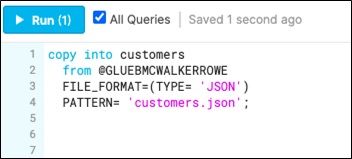
The worksheet looks like this when you execute the SQL.
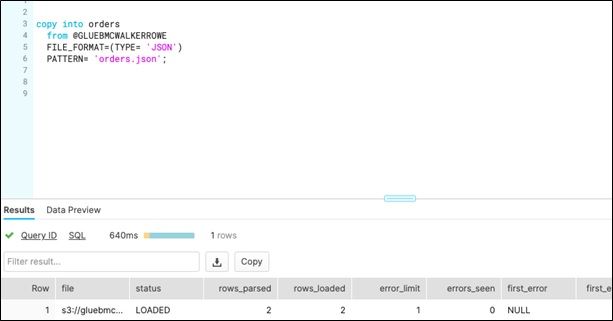
Then click on the file and see the data that it loaded.
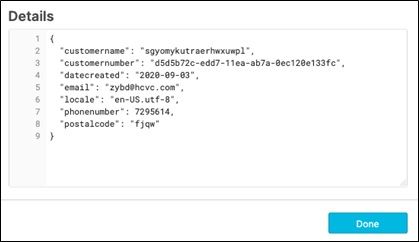
BMC, Control-M support Snowflake
BMC is a member of the Snowflake Technology Alliance Partner program. Snowflake’s cloud data platform helps customers to accelerate the data-driven enterprise with Snowflake’s market-leading, built-for-cloud data warehouse and Control-M, our market-leading enterprise application workflow orchestration platform.
Additional resources
For more tutorials like this, explore these resources:
- BMC Machine Learning & Big Data Blog
- AWS Guide, with 15 articles and tutorials
- Amazon Braket Quantum Computing: How To Get Started







